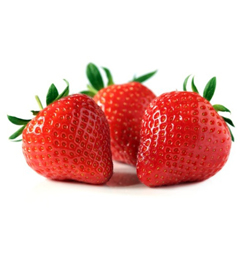You have no items in your shopping cart.
Problems Adding to Cart? Click here for assistance.

There are many unknowns when it comes to rosacea (pronounced "roh-ZAY-shuh"), but, generally-speaking, it is a chronic condition that mostly affects fair-skinned people of Northern European descent between the ages of 30 and 60 – women more so than men, but often more acutely exhibited by men. There are four subtypes of rosacea, three of which affect the skin and another affecting the eyes.
The most common symptoms of rosacea, which most often exhibits itself across the cheeks, nose or forehead, are flushing, persistent redness, visible blood vessels, bumps and pimples. It is because of the pimples that rosacea is often misdiagnosed as acne. In fact, despite the fact that around 14 million people purportedly have rosacea, many others are unaware that they have this condition.
A study published in August 2007 by the chief of the dermatology department at the University of California, Richard L.Gallo, MD, PhD, found that rosacea may be a result of the overproduction of two anti-inflammatory proteins, which causes a third, unwanted protein. Gallo discovered that peptides known as cathelicidins and the proteolytic enzymes that activate cathelicidins in the skin are abnormal in patients with rosacea. A study in Belgium then aggregated all the research in the last couple of years and made a connection between the regulation of cathelicidins and vitamin D. Still, there is little understanding about what causes this overproduction or rosacea, in general.
It’s difficult to completely prevent a condition whose causes are unclear, but there are treatments and watchouts that may prevent rosacea flare-ups. Some doctors prescribe antibiotics for rosacea, but since bacteria is not the likely target, its efficacy is questionable. There is a list of things to avoid often seen associated with rosacea: heavy exercise, spicy food, alcohol, caffeine and foods high in histamines (cheese, yogurt, red wine, bacon and other cured pork products), but one person’s trigger may make no difference to another rosacea sufferer. Same goes for medicines and topical creams, lotions and potions. While anti-inflammatory cortisone treatments work for some, this steroid can actually trigger rosacea in others. Anti-aging treatments like microdermabrasian and peels may aggravate symptoms in some, yet be benign and even beneficial for others. Due to the above-mentioned study, vitamin D may prove beneficial in preventing rosacea flare-ups. Since vitamin A can inhibit the effectiveness of vitamin D, avoid vitamin A-containing retinols.
Vitamin D, as noted above, may be an effective ingredient to prevent rosacea flare-ups. Otherwise, and with much else about rosacea, one person’s effective treatment may be verboten for another. Niacin may help regulate the skin, but it may also trigger flushing. Sandalwood, applied directly on areas affected by pustules and erythema (redness) may be helpful. In some cases retinols prescribed at low doses can actually be effective (despite their contraindication with vitamin D), depending on the symptoms and type of rosacea. Alpha-hydroxy acid (like glycolic acid), typically in facial peels, can also be effective at reducing redness. Azelaic acid, also sometimes used to treat acne, may be an anti-inflammatory aid for rosacea sufferers as well.
Stress, emotional and external (like sunlight and possibly aggravating culprits like those noted above) is to be avoided by rosacea sufferers. And since they vary from person to person, it’s essential to be cognizant of one’s own personal triggers.
What is it: Rosacea (and Some Dos and Don’ts)
New and Trusted Rosacea Solutions
Cynthia Nixon's Regimen for Conquering Rosacea
Sevani Advanced Complexion Corrector
Your Best Face Balance (day cream)
E'shee Clinical Esthetic Cellular Repair Serum




July 30, 2015
by kristy Ross
Hi, Monsia makes the best in my opinion.